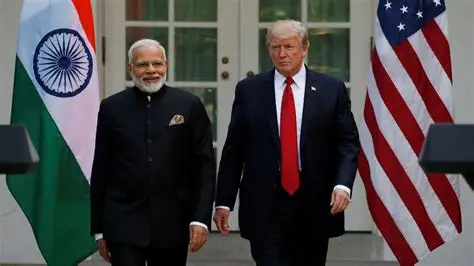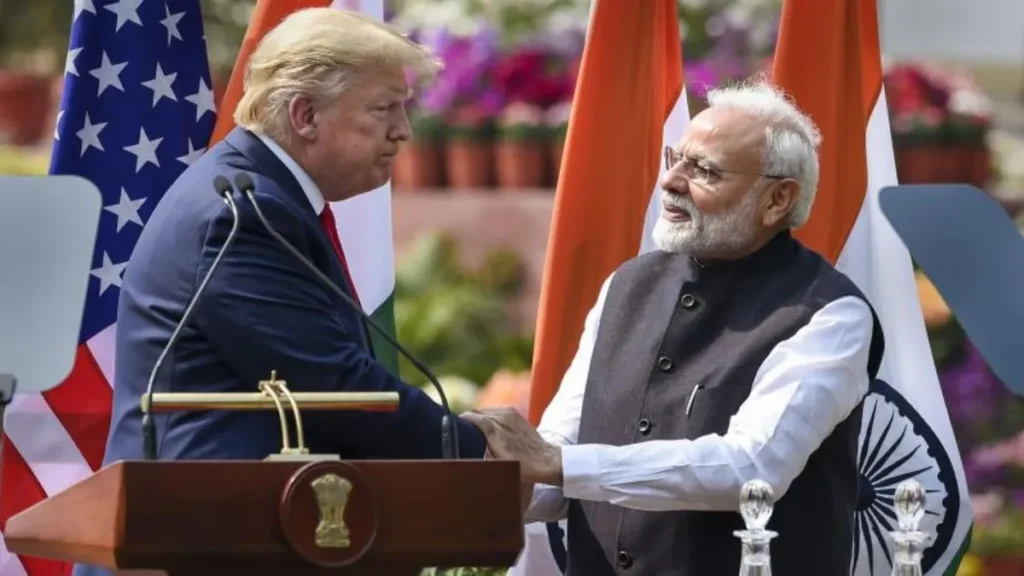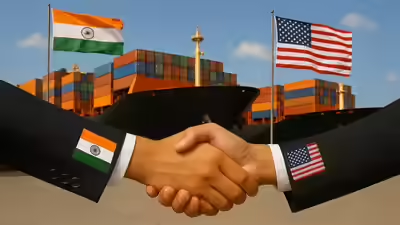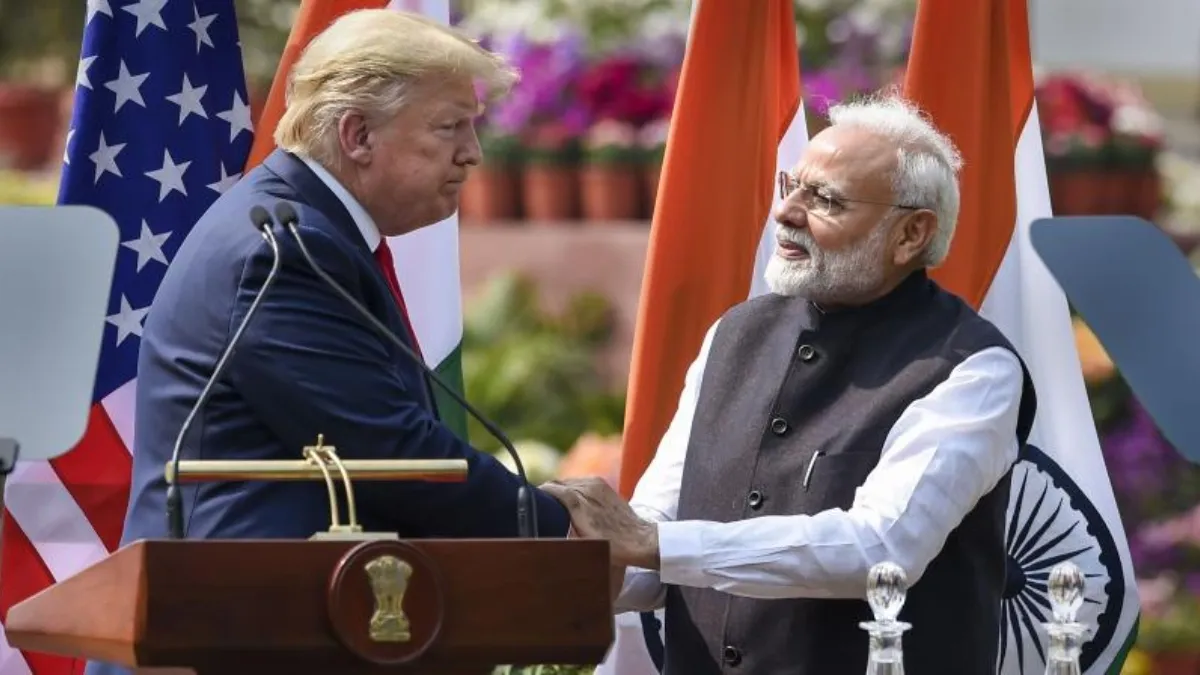“India-US trade talks have resumed, just weeks after Trump imposed a steep 50% tariff. Now, the US no longer seeks sweeping access to India’s agricultural and dairy markets.”

Donald Trump and PM Narendra Modi. On Tuesday, India and US resumed trade negotiations
“This is completely contrary to the recent outburst of Trump’s trade adviser and attack dog Peter Navarro, who had claimed that India was finally coming to the negotiating table on a trade deal. But whether that is true or not remains uncertain. In reality, the situation looks quite different, as signs suggest that America has hurt itself with its tariff tantrums.”
Trade Talks Kick Off Again After Halt
“On Tuesday, India and the US resumed their trade discussions — a face-to-face meeting that came after the US imposed a 50% tariff on India last month.”
“This was when Trump, showing a marked change in his tone, said last week that negotiations were ongoing to resolve trade barriers with India. The notable point, however, is that Trump made no mention of the Russian oil purchase issue — suggesting that all his earlier sharp remarks were merely a facade to pressure India into accepting the terms of his trade deal. In fact, it was nothing more than a social media rumor, spread only to create the impression that India would be forced to agree to those terms.”
Throughout the standoff, India adopted a wait-and-watch strategy to see whether the trade dispute would settle on its own. At the same time, New Delhi took several symbolic and substantive steps, with Prime Minister Narendra Modi renewing his ‘swadeshi’ campaign and pledging to stand firmly with farmers. In his speeches, Modi never blamed the United States, nor did he bring up the issue of Trump’s tariffs.
For India, Washington’s demand for greater access to its agricultural and dairy markets has always been a clear red line. But with a significant shift now visible on the US side, both countries are once again engaging in serious discussions.

NEW DELHI:-“On Tuesday, the United States and India held talks in New Delhi on the bilateral trade agreement. The discussion came at a time when the US government had imposed a 50% import tariff on Indian goods, which had hampered progress on the deal. The meeting also followed Prime Minister Narendra Modi’s warm response to US President Donald Trump’s recent positive remarks on India-US trade relations.
So far, fifteen rounds of negotiations have been completed on the Bilateral Trade Agreement (BTA). The sixth round, which had been scheduled for August 25–29, was postponed after the US imposed the steep 50% tariff.”**
India-US trade agreement
The US side was led by Brendan Lynch, Trade Representative for South Asia and Central Asia, while India was represented by senior Commerce Ministry official Rajesh Agarwal.
Lynch oversees the development and implementation of US trade policy with 15 countries in the region. His responsibilities include managing the US-India Trade Policy Forum (TPF) and coordinating activities under the Trade and Investment Framework Agreements (TIFAs) with regional partners.
‘We have held extensive discussions, and there are clear indications that the US’s chief negotiator will arrive in India tonight and continue talks tomorrow. This is not the sixth round of negotiations, but it is certainly an important round of discussions on trade. The focus is on exploring how India and the US can move closer to an agreement,’ said Rajesh Agarwal, India’s chief negotiator and Special Secretary in the Commerce Ministry, on Monday.

Prime Minister Modi responded positively to Trump’s favorable view of the trade talks.
Both sides have expressed hope that ongoing talks will unlock greater avenues for partnership between India and the United States. Just last week, Prime Minister Narendra Modi welcomed US President Donald Trump’s positive remarks on trade discussions, highlighting optimism about the future of bilateral ties.
This was the second recent instance where Trump not only praised Modi but also spoke of strengthening relations between the two countries. After weeks of strain caused by Washington’s imposition of 50 per cent tariffs on Indian goods, relations now appear to be softening, with Modi responding warmly.
According to Trump’s administration, India has been hit with a 50 per cent tariff — including a 25 per cent levy on Delhi’s purchase of Russian oil — among the steepest imposed on any country in the world. India, however, has condemned the move as ‘unfair, unjustified and unreasonable.’ Defending its decision to buy Russian crude, New Delhi has consistently maintained that its energy procurement is guided solely by national interest and market dynamics
